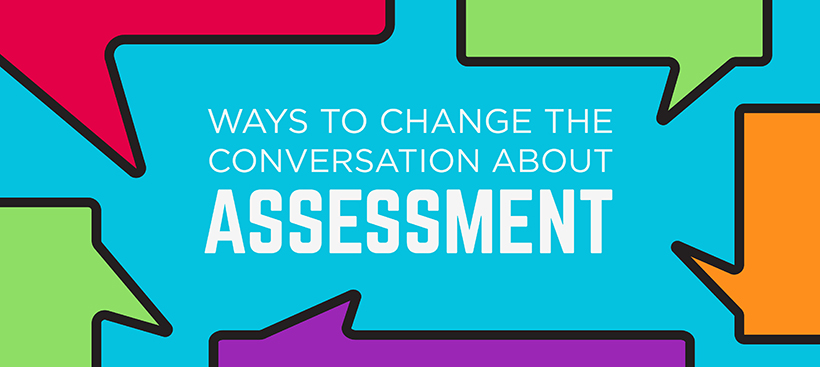This post was written by Kathryn Mitchell Pierce, a member of the NCTE Standing Committee on Assessment.
Conversations about student test scores are common as we implement data-driven decision-making processes.
I recently sat with a group of teachers discussing their students as writers. The assessment coordinator provided them with charts summarizing the test scores from a commercial writing assessment administered the previous spring. Their conversations were focused on understanding the assessment tool and interpreting the statistical analysis of the numeric data. District leaders had actively supported their development in this area with workshops, book studies, and other events focused on their assessment literacy.
As I listened, I was reminded of conversations I had witnessed in another school district some years earlier.
These teachers, too, devoted meeting times to discussions of student writing data and worked to develop their assessment literacy. While the first group of teachers I mentioned was focused on test scores from a writing assessment, the teachers I was remembering had been looking at samples of student writing from their own and colleagues’ classrooms. District leaders had actively supported teacher development in this area with workshops, book studies, and teacher study groups. These teachers met routinely with their grade level colleagues, sharing examples of student writing. They talked about what they were celebrating, and what they were seeing that raised questions. They also talked about their writing curriculum and the ways they were teaching writing. Such sharing informs teaching, and also highlights and makes visible teachers’ beliefs and values.
The weekly faculty meetings at this school had been restructured to provide time for teachers to meet with colleagues in other grade levels, too. When the kindergarten, first- and second-grade teachers met, for example, they looked at selected samples of student writing and talked about what they were learning about how writers grow, about their teaching practices, and about the characteristics of good writing. Through these conversations, teachers developed a shared vocabulary for describing their teaching and assessment practices. These conversations about student work directly informed their classroom practice.
During other faculty meetings, the teachers met in adjacent grade level groups—K–1; 2–3; 4–5 to look at samples of student writing. Fourth-grade teachers had an opportunity to see what their former students were now doing in fifth Grade, and the specific ways their writers had grown. This quasi-longitudinal look at their own students helped teachers identify patterns in writing development.
Individual samples of student work became mile markers of growth, rather than endpoints. Their assessment lenses shifted from “Does she or doesn’t she demonstrate this skill?” to “Where does this writer seem to be going?”
Simultaneously, the fifth-grade teachers learned more about the prior experiences and accomplishments of their students. The teachers learned more about what was happening in their colleagues’ classrooms and what they valued in the writing samples. They talked about the evidence they accepted that their writers were growing. They fine-tuned their language for describing student writing and learned to see through the assessment lenses adopted by their colleagues.
Talking with others about what we see and value in samples of student work helps us articulate more clearly these insights and values. The NCTE Standards for the Assessment of Reading and Writing support assessment as a collaborative inquiry process that focuses on the contexts, products, and processes of learning. Shared conversations with our colleagues about samples of student work highlight the classroom contexts in which these examples were created and the processes through which students created them. They invite all participants to explore their beliefs and assessment practices.
Teachers in both of these school districts were dedicated to their students and to their work as professionals. They were supported by leaders who created and protected shared planning time and professional learning time. The focus on shared conversations about examples of student writing, however, seemed to have a more direct impact on classroom teaching and learning.
For more information and examples about collaborative literacy assessment see Going Public with Assessment: A Community Practice Approach (NCTE, 2018) by Kathryn Mitchell Pierce and Rosario Ordoñez-Jasis, as well as other titles in the Assessment Strand of the Principles in Practice imprint.
NCTE Standing Committee on Literacy Assessment
CHAIR, Peggy O’Neill (Loyola University, Baltimore, MD)
Josh Flores (Birmingham, AL)
Bobbie Kabuto (Queens College, Flushing, NY)
Becky McCraw (Goucher Elementary School, Gaffney, SC)
Kathryn Mitchell Pierce (Saint Louis University, MO)
Elisa Waingort (Calgary, Alberta, Canada)
Kathleen Blake Yancey (Florida State University, Tallahassee)

